A Cathedral in Outer Space – The Story of Vincent Ward’s Alien 3
Posted by Michael Foertsch on May 22, 2019 (Updated: 07-Sep-2023)
The following is a guest editorial written by Michael Foertsch, a German freelance journalist who has previously written for WIRED Germany, Motherboard Germany, Spiegel, GamePro, Gamona and ZEIT.de. This article was originally published in German.
In celebration of Alien 3’s 27th anniversary, Michael’s original article has been translated into English for publication on Alien vs. Predator Galaxy. Several years ago Michael had the chance to talk to Vincent Ward and wrote the following exploration of the early days of Alien 3 and Vincent Ward’s aborted “wooden planet” concept.
Vincent Ward was standing in the middle of a German autobahn when the idea of a lifetime hit him. “I had just visited one of the medieval towns,” the filmmaker and artist recalled. It had been many years since he was a backpacker wandering through Germany; something that had deeply impressed him, because the New Zealander had always been fascinated by the art, culture and history of Central Europe.
“It was some city that began with a ‘W’,” Ward continued, “I still had this medieval world going around in my head. Then I tried to cross this highway with my big backpack.” Stupid, naive and like a robot he walked on the asphalt strip.
He didn’t even notice the cars. Only when he stood on the middle lane did he realize where he was. Cars and trucks were already shooting past him on both sides. He could neither go forward nor back. “I was stuck like a cow in a cage,” he laughed. “Suddenly I wondered how it would feel to someone who was thrown from the 14th century into the 20th century.”
It sounds and is like this: Vincent Ward is what you could call an eccentric in the very best sense. Growing up on a farm near Wellington in New Zealand, he spent most of his youth alone and, as he likes to say himself, “simply learned nothing decent.”
It was probably for this very reason that he decided in the mid-1980s to simply shoot a film inspired by the bizarre experience on the German autobahn: The Navigator: An Odyssey Across Time.
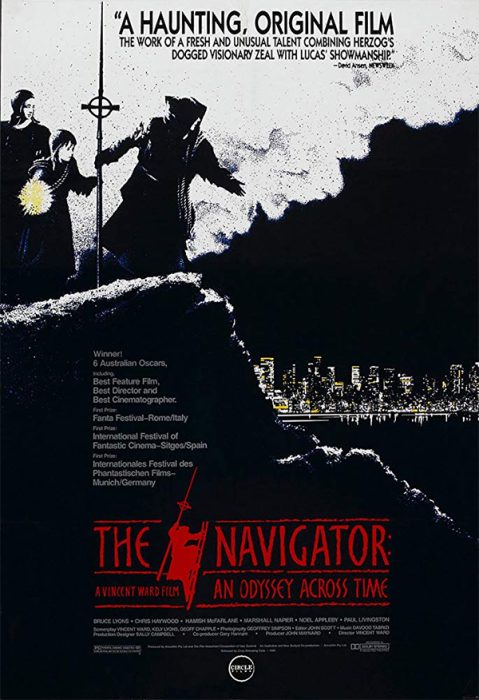
Packed in quiet, dreamy and spherical imagery, this adventure story tells how a group of Celtic villagers from the 14th century, led by a clairvoyant monk boy, made their way through a cave into the modern world of the 1980s.
The production was difficult and more elaborate than Ward had planned. Due to a tax reform in New Zealand, the would-be director lost several investors and subsidies shortly before shooting. As backdrops he had chosen mountain slopes that were difficult to access, which made the transport of equipment and crew a feat of strength.
Several times The Navigator threatened to be crushed over these and other challenges. But Ward remained stubborn and pulled the project through. Because he had no other plan than to shoot this film, which actually made it into the cinemas in 1988 – and promptly won numerous prizes in New Zealand and Europe. In the USA, on the other hand, the elegiac debut was hardly noticed.
So it’s almost a miracle that Hollywood producer Walter Hill stumbled into a small New York cinema one evening where The Navigator was running. And what he saw there took a hold of him and wouldn’t let him go. “You should definitely take a look,” Hill told his colleague David Giler because Hill thought he had finally found the man who could make the film that had been their most brutal headache for two years: Alien 3.
Starbeast
It was a surprise success that no one had seen coming. In the mid-1970s, special effects amateur Dan O’Bannon was trying to complete a script that he had begun years earlier. At that time, O’Bannon was completely broke and sleeping on his friend Ron Shusett’s couch. The story of a space freighter, a mysterious planetoid, and a lethal “alien being” was his only chance to get back on his feet.
Eventually the script was finished and landed on the table of Hill and Giler, the founders of the small production studio Brandywine Productions. They recognized it as the stuff for a nice B-movie horror slasher, but with some rework and the right director, it could be turned into a hit: Alien.
The latter became Ridley Scott, who brought the film into the cinemas in 1979 with the young actress Sigourney Weaver in the leading role – and made a lasting impression. Above all the title-giving alien being, the Xenomorph of the Swiss artist H.R. Giger, made sure that the film was long remembered by the viewers.

Alien was eventually followed seven years later with James Cameron’s Aliens, a completely different type of film. Ripley’s story was not continued as a science fiction horror, but as a war film inspired by the Vietnam conflict and the climate of the Cold War. Cameron used an old script called Mother as a basis, which he didn’t think he could ever film, and the second Rambo, whose script he wrote in parallel.
Ultimately, Alien and Aliens would enjoy cult status – fans have argued long and hard about which was the better Alien film – and had given 20th Century Fox a good return in the Box Office. They had recorded ten and twenty times their production costs. So there was an urge to continue the Alien series and, at best, to finish Ripley’s story, whose actress had become famous and threatened to demand higher fees than the studio liked. In addition, the conclusion of a trilogy always markets itself well.
The producer duo of Hill and Giler needed to find a creative and impressive final entry. At least as spectacular and surprising as Cameron when he continued the original: a new backdrop, a new genre impact but with Xenomorph as a threatening star. Cameron, as he later said himself, had an idea for a third alien part but was not available – “even if the money had been right.”
So Hill and Giler spun ideas themselves. After all, they were experienced writers and had played their part in getting O’Bannon’s original script into shape. The two had images of Ellen Ripley and Newt chasing a new Xenomorph through a Blade-Runner-like metropolis on a strange planet. Or of a gigantic Xenomorph that destroys the futuristic New York City. But they couldn’t really get themselves excited about these ideas.
Hill and Giler, who at times toyed with the idea of a two part conclusion to the Alien saga, turned to the then-currently in demand Neuromancer author William Gibson. His gloomy, dirty and pessimistic cyberpunk aesthetic was what they felt Alien needed. In the later months of 1987,Gibson completed his draft of Alien 3, heavily inspired by the Cold War and based on a 16-page collection of ideas by the two producers, which he himself described as “the attempt of a novelist” who “wanted to gain a foothold in cinema.”
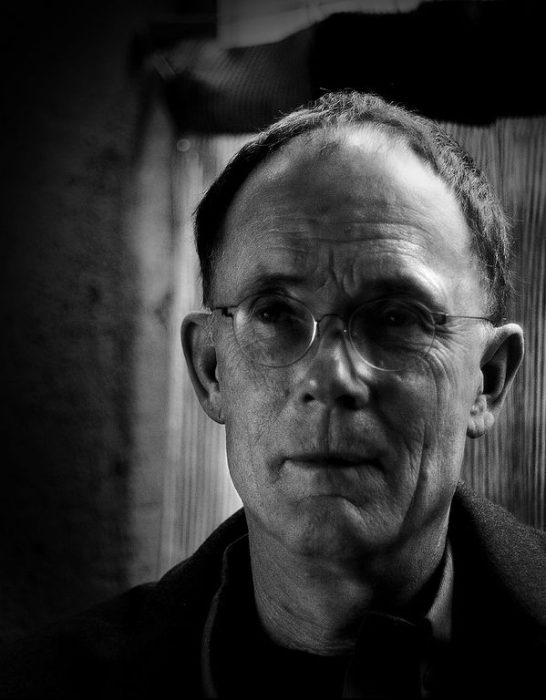
William Gibson
Complete with a space socialist republic on a gigantic space station, genetic experiments and a new viral take on the Alien reproductive cycle, Gibson’s attempt didn’t impress Hill and Giler, not was Gibson happy with it. “It wasn’t really good,” says Gibson today – even though his idea has now been adapted into a comic and an audio drama. His vision would have been too massive, chaotic, opulent and expensive, Hill and Giler judged, but they didn’t want to give up immediately. Gibson would also complete a second and much more restrained second draft but his involvement with the film would end when he departed the project, blaming Hill and Giler for wasting his time.
Renny Harlin, who had just come into the spotlight with Nightmare on Elm Street 4, was the first candidate for the director’s chair and had an idea for the story himself. He suggested that they “continue the story on the planet where the Aliens come from.” He wanted Ripley and a team of scientists to investigate the origins of the Xenomorphs. An idea that the studio immediately vetoed because that would simply be too expensive to film.
Negotiations with Sigourney Weaver continued to be quite difficult at the time. She wanted to have a say in the script as well as the director. “I don’t want to do what I did before,” she says in the Wreckage and Rage: The Making Alien 3. And like Harlin, the avowed anti-gun activist didn’t want to be involved in a film in which she’s (again) surrounded by guns and flamethrowers. To add further complications to the situation, Sigourney had also threatened Fox with a lawsuit due to outstanding payments that Fox owed her following Aliens.
On Harlin’s recommendation, the Near Dark scribe Eric Red tried his hand at Alien 3 and wanted to comply with the producer duo’s wish to offer something other than just metal corridors and darkness. And with Weaver’s involvement an uncertainty, Ripley was nowhere to be seen. He then wrote an extremely unusual script about a space station that housed a replica of the American Midwest under a huge dome.
There are huge fields, farmhouses, tractors – and secret experiments with Alien DNA. The hero was not Ripley, but the cybernetically enhanced Sam Smith, who was rescued from Aliens by the spaceship Sulaco, and then found himself faced against various hybrids born from cows, pigs, cats and chickens. Oh, and ultimately the whole space station would turn into an Alien. It’s a crazy script that borders on a parody and Eric Red himself calls it a “piece of garbage.”
Following Eric Red’s attempt at Alien 3, Hill and Giler turned to David Twohy who turned in the only draft that the powers that be seemed happy with. But the biggest criticism of Twohy’s script was that Ripley was missing. “It’s a great script,” Fox boss Joe Roth is quoted in a report by Entertainment, “but we’re not making the movie without Sigourney.” So Twohy found a way to weave it into the story during the overhaul. Now it just needed a director as Renny Harlin had said goodbye to Alien 3.
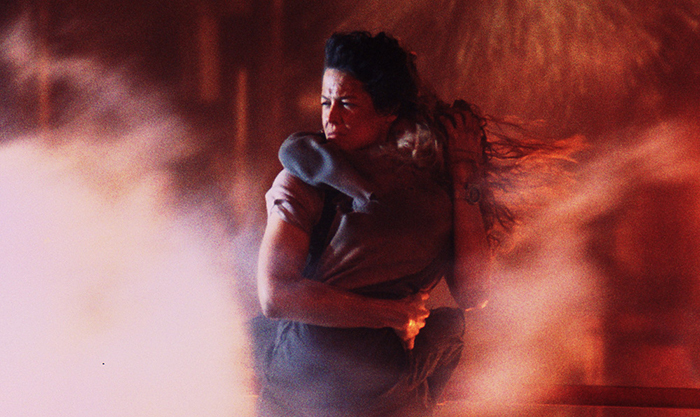
After a year of working with the producers and various writers, he didn’t want to wait any longer and his interest in working on the Alien series waned. Harlin assumed the sequel would only offer more “machine guns and more flamethrowers and Aliens” and he didn’t want to shoot anything that Scott and Cameron already delivered.
Instead he went on to make The Adventures of Ford Fairlane, Die Hard 2 and some time later Cutthroat Island, one of Hollywood’s biggest box office flops. But the departure was not a catastrophe: Walter Hill had already recognized Vincent Ward as the better alternative; as the one who could make Alien 3 more than a simple science fiction action film.
But getting it to work was easier said than done. Although Vincent Ward had attracted a lot of attention and fame with The Navigator, it wasn’t easy to find him. Walter Hill was repeatedly referred back and forth until he had Ward’s agent on the phone. And when he could finally talk to the New Zealander Ward in person, he was totally broke and living in a tiny basement apartment.
Only a few months earlier he had spent all his savings on a trip through the Canadian Arctic. For his next project, Map of the Human Heart, he had explored the landscape there and talked to natives and former bomber pilots. The offer from Hollywood would have solved many of his current problems.
Nevertheless, Ward refused. “I’m not interested,” he insisted, as with other studios and filmmakers who courted him after his debut film. “Many had called me, wanted to talk to me. Steven Spielberg was one of them.” That had nothing to do with arrogance, Ward would explain. He simply believed that he was not ready for Hollywood and that he lacked the experience and the “right scripts for all that.”
But Hill and Giler didn’t give up. They repeated their offer several times and tried to explain to the New Zealander what a “fantastic opportunity” he would give up. They also sent David Twohy’s 100-page script to Australia. But the only reinforced Ward’s stance: “I read it. I hated the story,” recalls Ward, “So I said again ‘no.’”
Only his agent managed to change Ward’s mind. He called Ward “insane” and urged him to think about his future and his precarious financial situation. “I let myself be beaten,” said Ward, who hated his basement apartment and didn’t have much to lose – even if the film was bad. But the young filmmaker imposed one condition on the producer: “I only do it when we find an original story,” he demanded. The powers that be told him to “do it, change the script, that’s okay.” And that’s exactly what he did.
A Flight to LA
In early 1990, a young Ward was on a plane heading for Los Angeles. He had a whole 15 hours flying time in front of him, during which he reviewed Aliens and Aliens in his head. “They are brilliant,” says Ward with conviction. “Here two directors were given the opportunity to realize a very personal vision.” That’s exactly what Ward wanted to do with the offer that had been given to him. He wanted to make a film that corresponded to his passion and personality: something new, something different, a vision.
Only shortly before that time, Ward had published an illustrated book called Edge Of The Earth with drawings and paintings that, like The Navigator, were characterized by medieval and sacred images: Processions, naves, exorcisms, markets and libraries. Over the hours at lofty heights, these images gradually formed into a story, which he poured into a script that could be filmed, supported by the experienced and legendary, nimble screenwriter John Fasano, who had been hired by the studio.
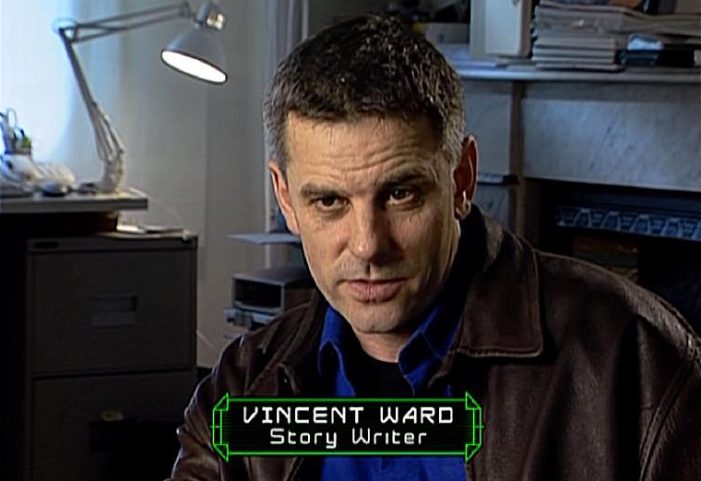
Vincent Ward on Wreckage & Rage: Making of Alien 3.
David Twohy didn’t know anything about the handshake deal with Ward at first. As far as he knew, he was the one who would write the third Alien film, that it would be his story on the big screen. But when rumors spread about another script, he was told that Ward and Fasano would write the fourth part of the Alien saga. A lie that deeply offended and insulted Twohy. He delivered his screenplay, but then left the project to pour his thoughts on criminals against aliens into a completely original work that would later be filmed with Vin Diesel in the lead role: Pitch Black.
Ward and Fasano only took a few weeks, and by the end of March 1990 had completed the first draft. It was far more original and stranger than the producers and the studio ever dreamed. It starts with a quote from Narziß and Goldmund by Hermann Hesse: “But how do you want to die, Narziß, if you don’t have a mother? You can’t love without a mother. You can’t die without a mother.”
What followed were descriptions of lights, rivers of molten glass, fire, steam and brief impressions of huge rooms made entirely of wood: a seemingly medieval glazier’s workshop. Then men in monk’s robes come into the picture. A monk has burned himself and is being treated. Then the camera follows the healer, his name is John, and his old but faithful dog Mattias through curved rooms: a huge library, naves, small lakes and wide grain fields and pastures with windmills, which stretch out under long halls with blue-painted ceilings. And a bell tower that stands tall through all this and out into the open.
The strange medieval world is not a monastery or a simple abbey on a foreign planet. It is a huge round space station called Arceon, which was once constructed as an exile for a Christian and technology-hostile sect. It was further developed and expanded over many decades – and now consists largely of wood and glass. “It was a place like the pictures of Hieronymus Bosch,” says Ward. “It has different levels on which different things happen: The glassworks, the farms, the machines that provide gravity and air.”
The wooden planet, eight kilometers wide in the script – but, according to Ward, only 1.5 kilometers in the “final film” – even holds a thin atmosphere and a small sea in a basin under the bell tower, which serves as a vantage point into space with huge crystal windows. It is from this vantage that can reach the surface of Arceon where the escape vehicle crashes into a surface lake, on which Ripley and Newt had to flee from the Sulaco, after it had been overrun by the Xenomorphs for unknown reasons. For days the monks had been watching the “heavenly light” shimmering dimly in the starry sky.
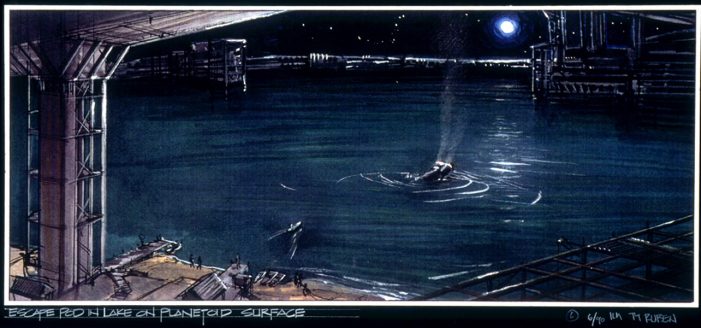
Newt dies on impact. Only Ripley and a vicious Xenomorph survives. Newt had “just annoyed him” explained Ward. But first and foremost, he wanted to give Ripley a “blow” that would make her struggle with whether it was worth it to continue fighting; she would be looking for personal salvation and a new will to live and fight that would carry her to her final destiny. In addition, as in Alien 3 when it finally made it to cinemas, she carried an alien embryo inside her.
It would have amounted to a dark, tragic-comic joke that she wants a child and a family but instead gets a Xenomorph. But also, Ward hoped, he would turn Alien 3 into a religious metaphor. “For me it was interesting that the elements of alien history could be superimposed with Christian mythology. The star, the heavenly vehicle with the envoy and the demon following her.”
The monks recovered Ripley from the wreck and nursed her back to health. There’s not much left of Newt, as the script describes it, except torn clothes, blood and a destroyed cryo pod. Ripley is taken below where she remains unconscious for days and is plagued by bizarre nightmares. In one of them a Xenomorph should slowly sneak up on her, as if it wanted to kiss her.
In others she should fantasize about her daughter, who died years ago. When she wakes up, she is told that the monks live here in the “old way, the good way” – and have done so for 70 years. When she hears that Newt is dead and what her body looked like, Ripley tries to warn the monks. Just as she once wanted to warn Weyland-Yutani. She fears something, a facehugger, could have gotten into the shuttle and infected the girl.
Devilhunters
Of course Ripley is not believed. How could it be otherwise? The Abbot fears that Ripley might disturb their quiet way of life and has her placed under house arrest. Immediately it becomes apparent, however, that Ripley is probably right. John is called by a monk whose sheep are sick. When they arrive at the stable, they can find animals in extreme pain and in an explosion of blood and guts, a sheep-Xenomorph emerges from the gore.
Instead of having Ripley explain and help, the abbot accuses her of having brought the “pestilence” to the sacred sanctuary. For this she is thrown into the dungeons. From there John wants to save her, who believes that the Alien is a satanic creature or maybe even the devil himself. Meanwhile, the alien plague spreads. One of the creatures crawls through the shafts of Arceon and pulls a poor monk down through the toilet.
When John reaches the dungeon, he releases Ripley. But not only her, also Anthony, an android who had been imprisoned there years ago. He had been sent to the station as a spy but had been unmasked. He theorizes that the Aliens incorporate the characteristics of the being in which it gestates, “assuming that the animal is the dominant life form on the planet.” As the group climbs towards the heart of the station, Ripley suspects for the first time that one of the creatures is growing up inside her – but tries to dismiss it as overexertion.
A little later, Arceon’s fields and windmills are on fire. A Xenomorph stalks its way through the grain and shows that, like a chameleon, it can take on its golden colour of the wheat field. With its long arms and claws, it massacres the defenceless monks. Others are infected with Alien embryos, which do not break out through the chest, but through the neck and head. In addition, it can be seen that the wooden planet was planned as a death trap from the very beginning: in the sacred technology room there is no air or water treatment, only large blowers. “Your atmosphere is finite,” says Ripley. “When the plants die, the fire will eat up your oxygen.”
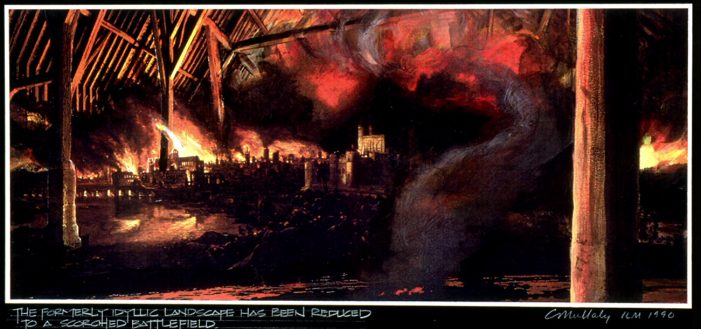
In the grand finale, Ripley and John face the Alien and manage to throw the creature into a vat of molten glass, pour water over it, and causing it to explode. But Ripley still seems damned. The Alien within is stirring and wants to break free of her. John doesn’t want to give up on her, however, and carries out a brutal exorcism and manages to suck the Alien out of her body into his. Ultimately, she escapes aboard her escape capsule – along with John’s dog Mattias.
At least that’s the version of the script that Fasano and Ward handed in to Fox, which still had a lot of gaps in logic and fuzziness. Where the Alien and the Facehugger come from, for example, is not completely clarified. Was the Xenomorph in Newt or already fully grown on board the ship? And why can the Alien camouflage itself in the wheat field as in chameleon? Ripley’s daughter is also called Kathy instead of Amanda. But these quirks would have likely been addressed in future drafts.
It was a first draft, “not the finished film,” as Ward says. He also found some of the characters too “stereotypical” and illogical. Sigourney Weaver would also have a say in the writing, as she wanted Ripley to die. Ward already had a scene in mind, in which Ripley steps heroically into the burning fields and ends up in a rain of fire and breaking stained glass.
The Machines Are Running
The script did impress despite – or rather, because of – its unusual approach. At least in the beginning. Fox budgeted Alien 3 at $40 million and officially gave the go-ahead for the production at the end of 1989. “I wanted to spend all of it,” Ward said. “I wanted to take every penny of the 40 million to scare people.” Under production designer Norman Reynolds, concept images and sketches were promptly created – including the infamous image of a Xenomorph-sheep with a human face on its butt.
A few months later, in the summer of 1990, the artist and experimental architect Lebbeus Woods was hired to design the wooden sacred buildings and Arceon. Some of them found their way into large and small set constructions, which were created over several weeks, in the Pinewood Studios in England, where the shooting was to take place. Ward also met HR Giger, who contributed some ideas – although Ward was under the impression that Giger didn’t like him!
At the same time, Vincent Ward was having initial conversations with the potential actors who were to be seen alongside Sigourney Weaver. Among others, Ward had the Monty Python celebrities John Cleese and Michael Palin in mind as the monks. So the machine had started up and was scheduled to be released at Easter in a year – by Rupert Murdoch himself. But suddenly the studio started to worry. The costs for the crazy vision of Alien 3, which had made the production interesting in the first place, would be too high. The film had to be cheaper and therefore simpler, less elaborate and epochal.
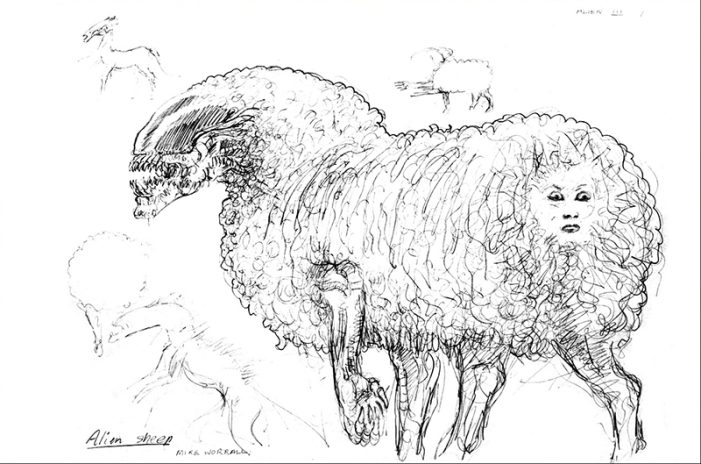
Again and again Ward would receive short notes and remarks from the studio and the producers about what would work and what wouldn’t. It was suggested that Ward turn the wooden monastery into a mining community and to cast supporting characters with actors who the viewers know. But Ward firmly held his ground, refusing again and again. So the producers hired the little-known screenwriter Greg Pruss to quietly rework the Ward script – with modest success.
So John Fasano was called in to write a “lighter” version of the story on his own, one that would keep the story but be possible with a smaller budget. Fasano claimed he completed around 10 different drafts of Alien 3 while he was working on the project. Ward couldn’t and wouldn’t accept that the alterations towards his vision. This led to a meeting at Fox, where the director was forced to sit outside and wait until he was finally allowed in the room.
“I said that I wouldn’t make the film if they deviated from the core idea that I suggested to them – and that they had completely agreed with,” says Ward. “I was perfectly clear about that from the beginning. I had a strong idea that I wanted to put into practice: If it works, it would be great, if it doesn’t, it would be okay, too.”
With Fox unwilling to make Ward’s vision a reality, he said goodbye to Alien 3 and Fox. Neither party had much more to say to each other. Ward was paid for his work and invested the money in his own art and film project.
Those involved in the film, were suddenly told, rather casually, by Ward that he had departed the project – and were often disappointed. Ward is said to have brought in a lot of passion, joy and ambition – even though some found his vision quite outlandish. But the work on Alien 3 could not be interrupted. Too much time and money had already been invested. They had to salvage something from the production.
In fact, the producers didn’t make a big fuss about the situation, but promptly hired a new director who they thought was promising. The 28 year old David Fincher, who was not yet known as the auteur behind classics such as Se7en or Fight Club, but as a commercial director. At this point John Fasano was still working on the film but he later found out that Larry Ferguson had also been hired to work on the film, so he quit.
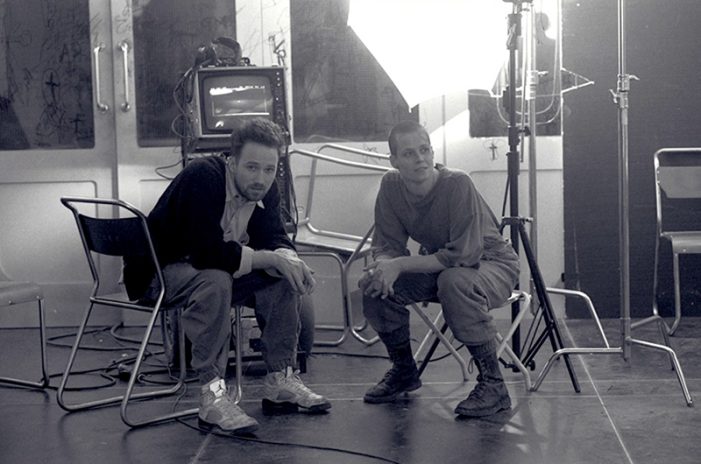
Ferguson was responsible for the infamous draft that Sigourney Weaver disliked because he made Ripley sound like a “pissed off gym teacher.” He provided a single draft before Hill and Giler took on the scriptwriting duties themselves. They merged concepts from both Twohy and Ward’s script. They turned the monastery into the prison planet Fiorina ‘Fury’ 161 and the monks into convicts who found religion. In December 1990 the first draft was finished, but Fox didn’t like it. The studio hired Rex Pickett to restructure the story in two stages and bring in more ideas. But that didn’t convince them either.
By April 1991, when production had long since begun, Hill and Giler had delivered eleven more drafts that were already quite close to the final result. But even then it was anything but smooth – especially for David Fincher. Because time and again new changes and rewritten scenes were delivered on the day they were to be shot via fax. Some dialogue that had just been perfectly filmed had to be reshot again the following day.
A test screening in September 1991 provided further difficulties when it didn’t go down well with the audience. Especially the numerous logic gaps, where the Alien actually comes from, were noted on feedback cards. Many of these points can be traced back to the first draft by Fasano and Ward. After the official end of shooting, cast and crew had to be flown in again for re-shoots of different scenes. Among them was the scene in which the Alien breaks out of a dog which had once been left out for cost reasons, after the initial version with an ox didn’t prove suitable.
This was followed by a long post-production process, reshoots and nearly a year of editing, resulting in a first cut of almost three hours. But the studio insisted on a film less than two hours long – half an hour less than Fincher would have liked. But Fincher gave in. A decision that was only corrected years later with the 2 hour 25 minute Assembly Cut, which was made without Fincher’s help but based on his editing room notes.
Alien 3 was able to do reasonably well at the box office when it was released on 22 May 1992. It was considered something of a domestic failure but the film did well worldwide. But both viewers and critics tore the film apart, many considering the worst entry in the Alien series. Even David Fincher declared years later in The Guardian that “nobody hates it more than I do.” It was not his film.
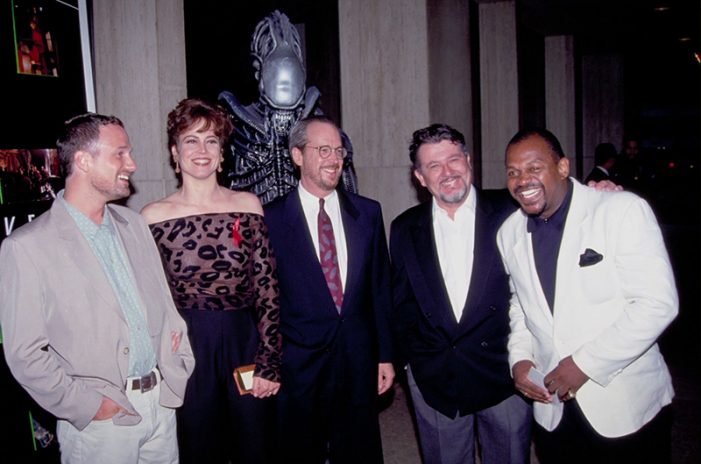
David Fincher, Sigourney Weaver, David Giler, Walter Hill and Charles S. Dutton at the Alien 3 premiere.
In retrospect, the verdict may have been too harsh. Fincher created a respectable film that deals with nihilism and women’s shelters as well as decay, despair and the safety of death. That’s also what Ward thinks. He thought that Fincher had “made the best of what he could achieve under these circumstances.” But Ward also feels as if he has been “gutted” at the sight of what Alien 3 is today – even if he got a writers credit in the finished product.
“It seems that every decision I made when I lost sovereignty over the script wandered in the direction of a cliché,” says Ward. “I think they were decisions made out of fear.” To this day, the artist and director is convinced that he was creating “something potentially special and memorable.” Seeing it all “wasted” and “poured away”, “that’s what made it so difficult for me,” says Ward.
Only the “little things” and some twists were left of his concepts. Like William Gibson, by the way, who later found out that a single detail from his original script survived in Alien 3: The barcode tattooed on the back of an inmate’s head.
Over the years, Ward has received two offers from studios and producers to realize his vision for Alien 3 as an independent film. But he rejected them. “They asked me if I wanted to do it away from Alien,” says Ward. “But I think it only really works with this creature.” Moreover, Ward believes that he and his idea live on in the Alien saga in a certain way.
He sees in Ridley Scott’s Prometheus some of the ideas he once brought in and wanted to put into practice – “to a certain extent, anyway.” Just like the Alien inherits some of its host traits, Ward believes his work on Alien 3 also had a strong influence on him, but also almost drove over him – like the cars on the German Autobahn once did.

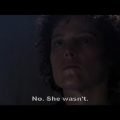





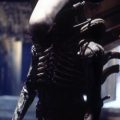

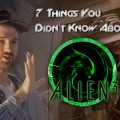
When delusional, power hungry producers ruin what would have been a great film. Add to this the drama they caused everyone else involved in A3 and we know who to blame. What could have been…..
Eff me, they’re expensive…🥺
How many of you guys/ gals ever watched ‘The Navigator’?
I’ve only seen it once, but the first half I found absolutely riveting…the second half I literally can’t remember…
(Mental note)…must check Amazon…
Cool interview. Interesting! Kind of a shame that the Ward movie didn’t get made. A comic would be nice, but this could be excellent as a computer animated feature.
Terminator trailer looks like fun. Nostalgic fan service in play, but that’s Hollywood these days. Tencent did Bumblebee, and that looked great. Would rather that had been the full G1 extravaganza Transformer fans have been waiting for. Would be good to do that before Peter Cullen goes to the great beyond! First 10 minutes show what could be. Clearly, the CGI is there, has been for a while. Applied to the Terminator films and with Cameron in charge, should look be fun. Trailer looked very good. OK to see old Arnold and old Linda on screen together. Shows it should be ok to see old Sigourney and Michael on screen together, except their characters are both dead and no time travel as part of Alien(s) universe.
A fascinating case of what could’ve been. What if, speaking of which what did any of you think of the Trailer of TERMINATOR DARK FATE? I personally had mixed feeling watching it.
We need this adapted into a comic book. I would love a hard cover featuring all 3 Alien 3 tales. I.e., the actual film, William Gibson’s version and Vincent Ward’s version all compiled…
My kind of post :)
It would be awesome if we could get a comic adaptation of his version of Alien 3.
Apart from that strange face on its ass I would love to see Sheep Alien on screen.
A fantastic article. Would love to read Fasano’s other drafts and Ferguson’s one,
#F**KGiler